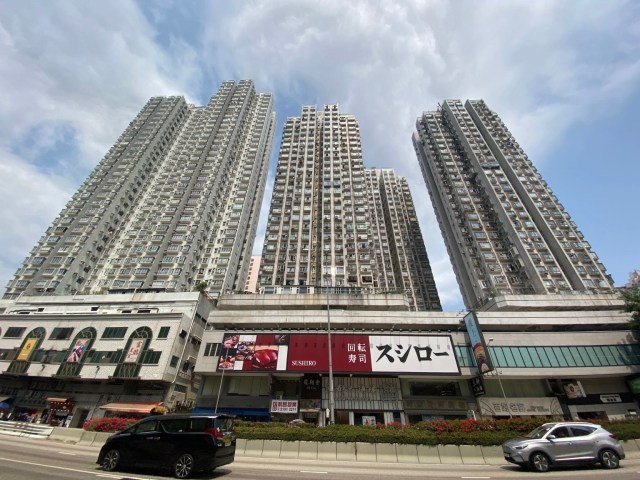
A taste of how things used to be.
Japan’s conveyor belt sushi chain Sushiro has been undergoing rapid international expansion in recent years. At the current pace it is expected that the number of restaurants outside Japan will outnumber the ones inside the country by the end of this year, making it a global chain not unlike McDonald’s or KFC.
This can be an interesting experience for Japanese people traveling abroad who can get a taste of home along with different regional flourishes. That’s just what our reporter Ikuna Kamezawa did on her trip to Hong Kong recently and found one location in the Wong Tai Sin area to be the best Sushiro in her modest opinion.
That might sound strange coming from a Japanese person, but despite their expansion the major chain has seen better times in Japan. The recent sushi terrorism scandals have only been the latest in a number of other off-putting moves surrounding Sushiro, including price hikes and dubious advertising practices. As a result, the overall experience has suffered and it’s often rare to find a full Sushiro.
In Hong Kong on the other hand, the business was booming and the tables were consistently full. The scene reminded Ikuna of Sushiro in Japan about two years earlier, before the pandemic and a whole slew of other problems befell them.
Even more nostalgic was the fact that all the sushi dishes were floating around the room on a conveyor belt rather than being relegated to the express lane that sends orders directly to table. Express lanes have become the norm in Japan ever since the licking terror attack earlier this year, and in Hong Kong Ikuna was reminded of why she can’t have nice things back home.
This Sushiro has practically the exact same touchscreen check-in service as Japan, making it easy to get a table. When she went, there were just under 70 other groups waiting ahead of her, so it took about an hour and 15 minutes before she could get a table.
Overall, the entire restaurant layout is strikingly similar to the ones in Japan but one very noticeable difference was the addition of little dishes to put soy sauce in. Although it’s a seemingly obvious feature for a sushi restaurant, the Sushiro locations Ikuna’s been to in Japan never had them. She always figured it was a cost-cutting move…but why can they do it here?
In order to make the most of her dining experience, Ikuna texted back to SoraNews24’s leading Sushiro expert Seiji Nakazawa for menu recommendations. While she waited for a reply, she grabbed her go-to favorites of squid off the line and an order of miso soup.
The miso soup for HK$17 (238 yen [US$1.79]) had much more of an emphasis on sweet tastes than umami, which seems to be a common feature of miso soups served at a lot of places outside of Japan.
This Sushiro was also having a Red Shari Festival from 3 March. Red shari is sushi rice covered in a slightly different kind of vinegar than the more common varieties. Ikuna actually liked red shari better so it was good timing.
▼ Squid with red shari
Suddenly she got a ping from Seiji, who texted her a few menu items that aren’t offered at Sushiro in Japan.
The one he recommended most was the Demon Shrimp for $22 (366 yen [$2.75]).
It certainly looked intense, but under the hood, the meat was delightfully crisp and sweet like a nice botan shrimp. Seiji told Ikuna that although Sushiro in Japan didn’t have Demon Shrimp, it could be found at their sister chain, Kaitenzushi Misaki.
Next, Ikuna was recommended to try the Soft-shell Crab Nigiri for $27 (450 yen [$3.38]). It had a stunning appearance but the meat was tender and delicious. The huge pile of mayonnaise on top was a little much though.
Then there was the Seafood Pickled Shiso Wrap for $12 (200 yen [$1.50]). Sushiro in Japan has a similar item with a large amount of pickled seafood with Korean yukhoe-style seasoning, but this one uses a leaf of shiso (perilla) instead of seaweed and also throws some ikura salmon roe on top for good measure.
Finally, Seiji told Ikuna to check out the Flower’s Love sushi for $17 (238 yen [$1.79]), if for no other reason than the delightful name.
There was something about the subtle touch of naming it “Flower’s Love” that was really nice considering a lot of people would probably have just gone with the obvious “Flower of Love.” And just as impactful as the name was the way Flower’s Love looked.
It was very nice tasting too, but Ikuna felt they again went overboard with the mayonnaise. This sushi was so sweet that it made her chest ache, which come to think of it, is a lot like love.
Seiji also had other recommendations, but this Sushiro in Hong Kong is so busy that diners are strictly limited to 60 minutes per visit. Ikuna was politely notified of this via her table’s tablet in Japanese.
In total she ate seven dishes of sushi which cost $144 (2,398 yen [$18.04]). That’s a fair bit more than a visit to Sushiro in Japan, but still way cheaper than a lot of restaurants in Hong Kong. The experience was really top notch as well and made her long for the heyday of this chain in Japan.
As she left, she could easily declare this the best Sushiro in the world. It’s a provisional title though, since she has yet to try most other countries’ Sushiro locations. Still, this one will certainly be hard to beat.
Photos © SoraNews24
● Want to hear about SoraNews24’s latest articles as soon as they’re published? Follow us on Facebook and Twitter!

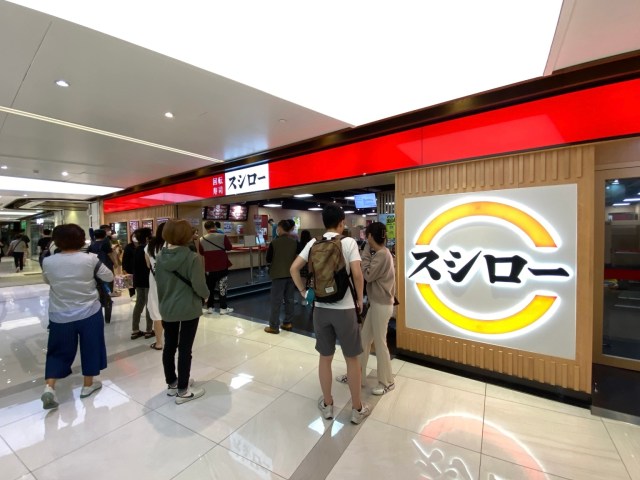
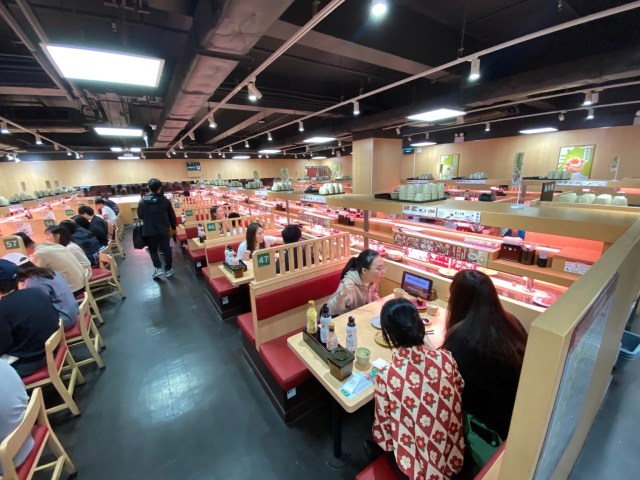
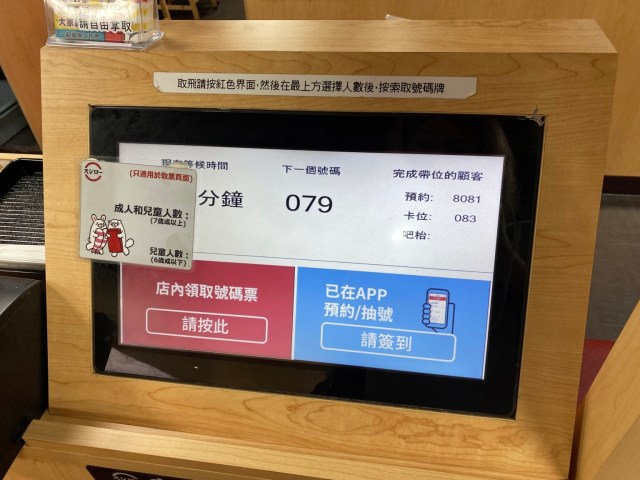
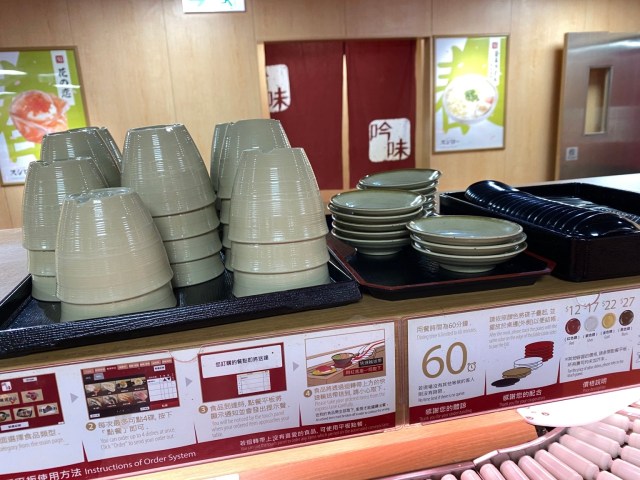
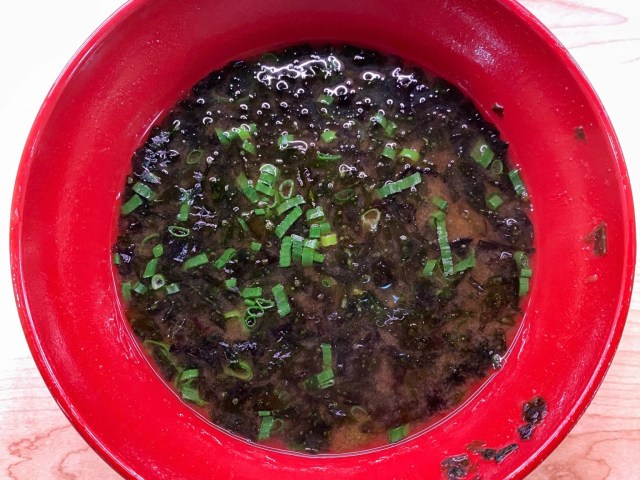
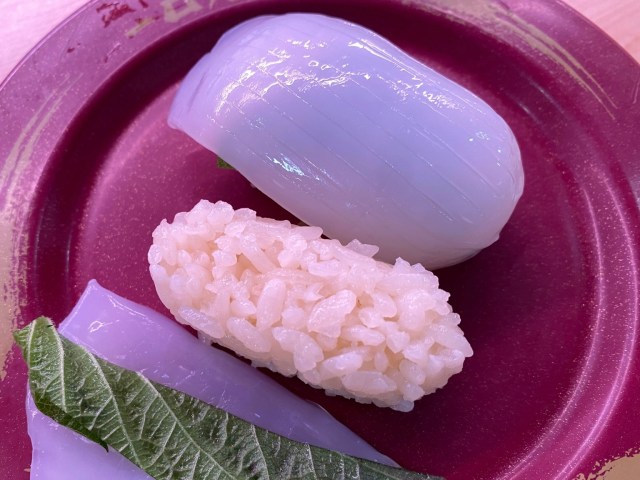

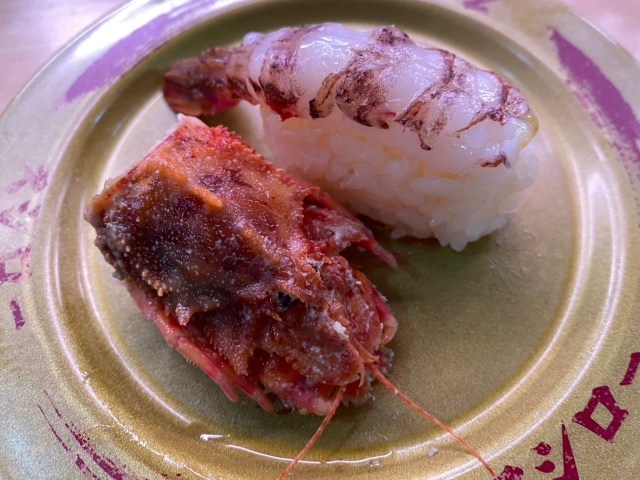
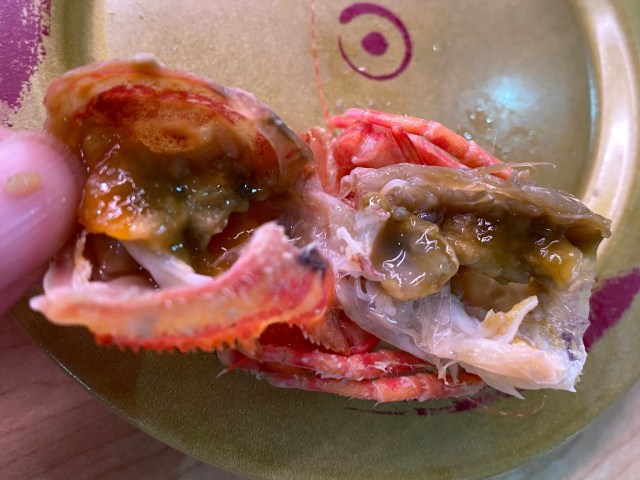
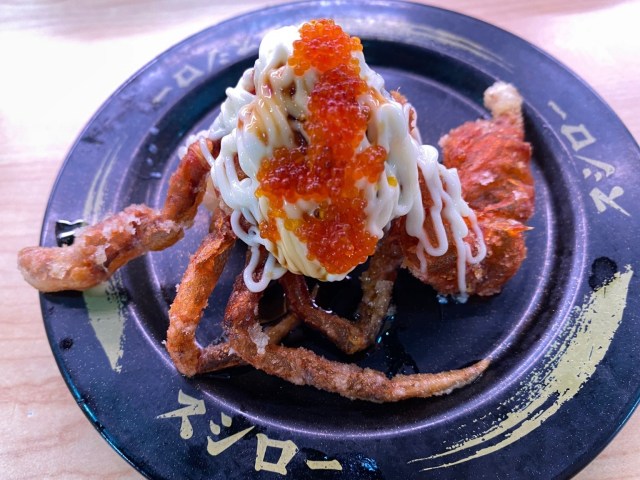
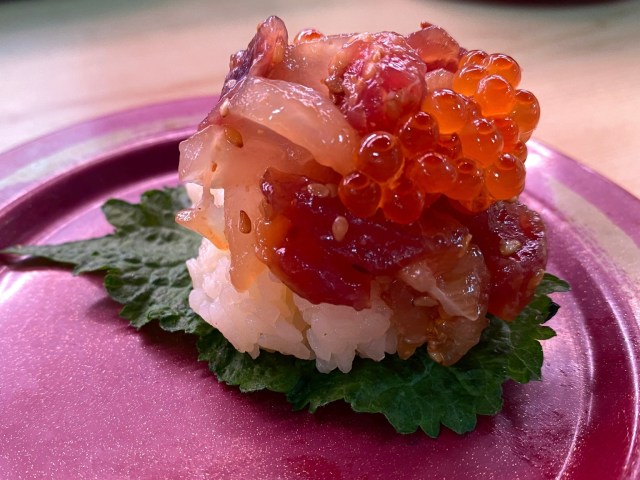
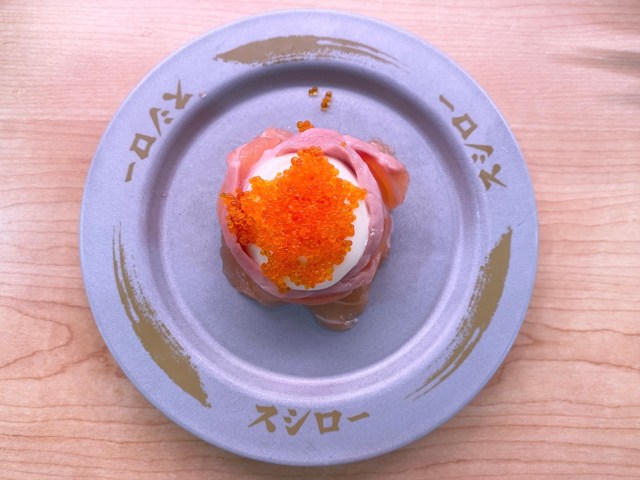
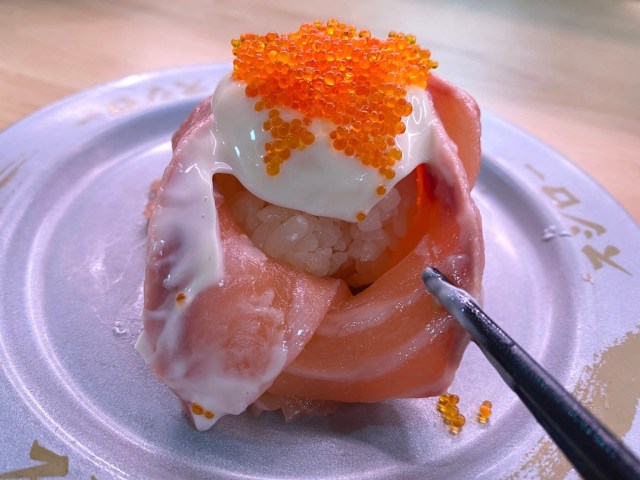
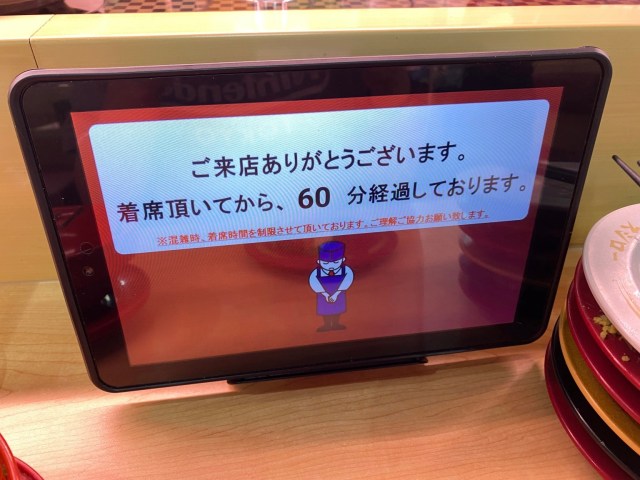
 Which Japanese conveyor belt sushi chain has the best scallop sushi?【Taste test】
Which Japanese conveyor belt sushi chain has the best scallop sushi?【Taste test】 McDonald’s breakfast menu in Hong Kong is like nothing we’ve ever seen in Japan
McDonald’s breakfast menu in Hong Kong is like nothing we’ve ever seen in Japan We investigate the half-priced beer at Sushiro that everyone is angry about
We investigate the half-priced beer at Sushiro that everyone is angry about Sushiro is making sushi so delicious that even McDonald’s should be worried
Sushiro is making sushi so delicious that even McDonald’s should be worried Japan super budget dining – What’s the best way to spend 1,000 yen at sushi restaurant Sushiro?
Japan super budget dining – What’s the best way to spend 1,000 yen at sushi restaurant Sushiro? Japan’s new difficult-to-drink-from beer glass protects your liver, but it’s a brutal experience
Japan’s new difficult-to-drink-from beer glass protects your liver, but it’s a brutal experience Demon Slayer: Kimetsu no Yaiba gets new roller coaster attractions and food at Universal Studios Japan
Demon Slayer: Kimetsu no Yaiba gets new roller coaster attractions and food at Universal Studios Japan How to order snacks on a Shinkansen bullet train in Japan
How to order snacks on a Shinkansen bullet train in Japan New samurai glasses are Japan’s latest weird must-have souvenir
New samurai glasses are Japan’s latest weird must-have souvenir Hello, cosmetics! Clinique teams up with Hello Kitty this summer for first-time collaboration
Hello, cosmetics! Clinique teams up with Hello Kitty this summer for first-time collaboration High-fashion Totoro cuddle purse is like an elegant stroll in the forest【Photos】
High-fashion Totoro cuddle purse is like an elegant stroll in the forest【Photos】 Burger King Japan suddenly adds Dr. Pepper and Dr. Pepper floats to its menu nationwide
Burger King Japan suddenly adds Dr. Pepper and Dr. Pepper floats to its menu nationwide New Nintendo Lego kit is a beautiful piece of moving pixel art of Mario and Yoshi【Photos】
New Nintendo Lego kit is a beautiful piece of moving pixel art of Mario and Yoshi【Photos】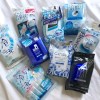 Japan’s cooling body wipe sheets want to help you beat the heat, but which work and which don’t?
Japan’s cooling body wipe sheets want to help you beat the heat, but which work and which don’t? Nintendo history you can feel – Super NES, N64, and GameCube controllers become capsule toys
Nintendo history you can feel – Super NES, N64, and GameCube controllers become capsule toys “The most Delicious Cup Noodle in history” – Japan’s French Cup Noodle wins our heart【Taste test】
“The most Delicious Cup Noodle in history” – Japan’s French Cup Noodle wins our heart【Taste test】 Starbucks releases a cute Frappuccino and Unicorn Cake…but not in Japan
Starbucks releases a cute Frappuccino and Unicorn Cake…but not in Japan Kyoto Tower mascot termination reveals dark side behind cute Japanese characters
Kyoto Tower mascot termination reveals dark side behind cute Japanese characters McDonald’s Japan’s Soft Twist Tower: A phantom ice cream only sold at select branches
McDonald’s Japan’s Soft Twist Tower: A phantom ice cream only sold at select branches Yabai Ramen: What makes this Japanese ramen so dangerous?
Yabai Ramen: What makes this Japanese ramen so dangerous? Finally! Nintendo Japan expands Switch 8-bit controller sales to everybody, Online member or not
Finally! Nintendo Japan expands Switch 8-bit controller sales to everybody, Online member or not Japanese government wants to build luxury resorts in all national parks for foreign tourists
Japanese government wants to build luxury resorts in all national parks for foreign tourists To combat declining birth rate, Japan to begin offering “Breeding Visas” to foreigners
To combat declining birth rate, Japan to begin offering “Breeding Visas” to foreigners 10 things you should buy at 7-Eleven in Japan
10 things you should buy at 7-Eleven in Japan Studio Ghibli releases anime heroine cosplay dresses that are super comfy to wear
Studio Ghibli releases anime heroine cosplay dresses that are super comfy to wear Woman charged for driving suitcase without a license in Osaka
Woman charged for driving suitcase without a license in Osaka Studio Ghibli unveils My Neighbour Totoro miniature house model
Studio Ghibli unveils My Neighbour Totoro miniature house model Kyoto experiencing problems with foreign tourists not paying for bus fares, but not on purpose
Kyoto experiencing problems with foreign tourists not paying for bus fares, but not on purpose Fighting mild hunger with a Japanese soda that turns into jelly in the stomach【Taste test】
Fighting mild hunger with a Japanese soda that turns into jelly in the stomach【Taste test】 Studio Ghibli’s Howl’s Moving Castle tapestry unveiled in Japan for first time
Studio Ghibli’s Howl’s Moving Castle tapestry unveiled in Japan for first time McDonald’s new Happy Meals offer up cute and practical Sanrio lifestyle goods
McDonald’s new Happy Meals offer up cute and practical Sanrio lifestyle goods Sales of Japan’s most convenient train ticket/shopping payment cards suspended indefinitely
Sales of Japan’s most convenient train ticket/shopping payment cards suspended indefinitely Sold-out Studio Ghibli desktop humidifiers are back so Totoro can help you through the dry season
Sold-out Studio Ghibli desktop humidifiers are back so Totoro can help you through the dry season Japanese government to make first change to romanization spelling rules since the 1950s
Japanese government to make first change to romanization spelling rules since the 1950s Foreigner’s request for help in Tokyo makes us sad for the state of society
Foreigner’s request for help in Tokyo makes us sad for the state of society Ghibli founders Toshio Suzuki and Hayao Miyazaki contribute to Japanese whisky Totoro label design
Ghibli founders Toshio Suzuki and Hayao Miyazaki contribute to Japanese whisky Totoro label design Doraemon found buried at sea as scene from 1993 anime becomes real life【Photos】
Doraemon found buried at sea as scene from 1993 anime becomes real life【Photos】 Tokyo’s most famous Starbucks is closed
Tokyo’s most famous Starbucks is closed Princesses, fruits, and blacksmiths: Study reveals the 30 most unusual family names in Japan
Princesses, fruits, and blacksmiths: Study reveals the 30 most unusual family names in Japan We try a rotating sushi restaurant in New Delhi, are surprised to find no rotating sushi
We try a rotating sushi restaurant in New Delhi, are surprised to find no rotating sushi Meat lovers, you can now satisfy your carnivorous cravings at this revolving sushi restaurant!
Meat lovers, you can now satisfy your carnivorous cravings at this revolving sushi restaurant! Put down the soy sauce! We try a new “expert” way to season your sushi【Taste test】
Put down the soy sauce! We try a new “expert” way to season your sushi【Taste test】 Which Japanese conveyor belt sushi chain has the best salmon sushi?【Taste test】
Which Japanese conveyor belt sushi chain has the best salmon sushi?【Taste test】 Which Japanese conveyor belt sushi chain has the best bintoro sushi?【Taste test】
Which Japanese conveyor belt sushi chain has the best bintoro sushi?【Taste test】 Sushi tacos now on sale in Japan — Can this cross-cultural cuisine please our biggest taco fan?
Sushi tacos now on sale in Japan — Can this cross-cultural cuisine please our biggest taco fan? Which Japanese conveyor belt sushi chain has the best salad sushi?【Taste test】
Which Japanese conveyor belt sushi chain has the best salad sushi?【Taste test】 Japan’s favorite super-cheap revolving sushi restaurant finally comes to Akihabara!
Japan’s favorite super-cheap revolving sushi restaurant finally comes to Akihabara! Revolving sushi chain Choshimaru’s sushi will no longer revolve in response to “sushi terrorism”
Revolving sushi chain Choshimaru’s sushi will no longer revolve in response to “sushi terrorism” Japan’s Sushiro revolving sushi chain stops revolving with conveyor-less food court branch
Japan’s Sushiro revolving sushi chain stops revolving with conveyor-less food court branch Conveyor belt sushi restaurants in Japan now offer random airline ticket discount gacha capsules
Conveyor belt sushi restaurants in Japan now offer random airline ticket discount gacha capsules 6 things you should try at Sushiro right now, according to staff who work there
6 things you should try at Sushiro right now, according to staff who work there We visit a ramen bar in Croatia, meet a whole new version of ramen we can’t wait to make at home
We visit a ramen bar in Croatia, meet a whole new version of ramen we can’t wait to make at home What should you use table salt for at a sushi restaurant? We asked a kaitenzushi maniac
What should you use table salt for at a sushi restaurant? We asked a kaitenzushi maniac Which Japanese conveyor belt sushi chain has the best prawn sushi?【Taste test】
Which Japanese conveyor belt sushi chain has the best prawn sushi?【Taste test】 We visit a restaurant called ‘Otaku’ in France, eat some otaku sushi
We visit a restaurant called ‘Otaku’ in France, eat some otaku sushi
Leave a Reply